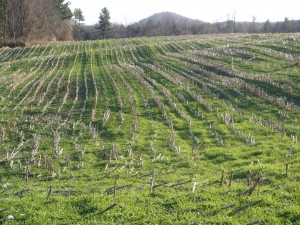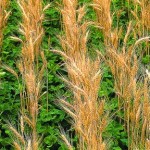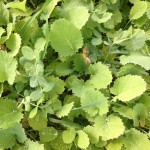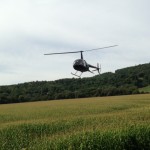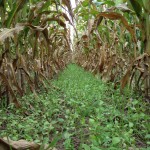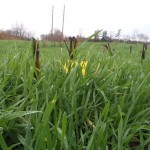When it comes to resiliency, cover crops are a no brainer!
Although the temperatures are still cold outside, every farmer I know is busily planning their cropping season. Whether it’s a vegetable grower firing up their greenhouse and anxiously awaiting their seed orders, grazers counting the days until their animals get to go back out on pasture, orchardists finishing up their winter pruning or field crop growers making final decisions on crop rotations and updating their nutrient management plans…all are gearing up for another busy growing season. This is the essence of farming. Each year a new season. Each year a new start. Each year another opportunity to try something new as you grow food to nourish your neighbors and beyond.
Agronomists spend the winter in much the same way. Learning, planning and stretching our brains to see what we can accomplish this next growing season. This winter has been dominated by discussions of COVER CROPS. I have presented, listened in the audience, had conversations with others at so many meetings, workshops, conferences. The buzz this winter has definitely been dominated by soil health, conservation tillage and cover crops. Things are changing. We need to react to those changes. The degree to which we can react to these changes in a way that is profitable is the degree to which we will be successful. Whether its climate change, water quality regulations, public perceptions of farming, it does not matter. The good thing is that Vermont farmers are innovative, creative, and most importantly…resilient. And when it comes to resiliency, COVER CROPS are a no brainer!
If you get our newsletter, you know that we recently hosted a No-Till and Cover Crop Symposium in Burlington over two days in February. We heard from farmers, researchers, crop advisers, and extension specialists from Pennsylvania, Ohio and VERMONT. Many of you were in the audience. If not, you can see some of the presentations and proceedings at the conference website. Over the course of these two days we heard about how soil health isn’t just good for the environment, water quality and public perception….it is good for your farm. Better water infiltration in high rainfall events, better water holding capacity during droughts, higher yields, and more. None of this will happen overnight, but as you start to implement Soil Health Systems on your farm, you will see some of the benefits in short order.
One easy place to start is by planting a cover crop. As we heard Heather Darby say at the symposium, we should stop calling these cover crops, and just call them CROPS. Not an afterthought that we throw out there at the last minute in a last ditch effort, but an integral part of our cropping system that we grow with intention, planning, proper fertility and establishment. When we do this we will satisfy the objectives of reduced erosion and enhanced water quality, soil health, farm resiliency and increased profits.
One day before our conference, the opening session of a National Conference on Cover Crops and Soil Health being held in Omaha, Nebraska was broadcast over the internet to over 200 locations across the country, including at our office in Middlebury. At this conference growers, researchers, extension educators, and industry representatives discussed how to increase the acres of cover crop seeded by 500% to reach 20 million acres by 2020. Although seemingly a steep challenge, I think it can be done. In Vermont in 2013, less than 20,000 acres were cover cropped , of the total of about 105,000 acres that are planted to annual crops. If we could double (or triple) that number, we would be well on our way. What can you do this year to increase your cover cropped acres?? Here are some ideas….
- If you have never planted a cover crop before, plant some winter rye this fall.
- Growing organic corn silage?? Seed some clover with your last cultivation.
- Frost seed a legume into your winter grain crops.
- If you are already planting cover crops…plant one more field than you did last year.
- Add some diversity. If you have been planting winter rye, add some tillage radish or vetch (or both) and seed it earlier.
- Plant some shorter season corn or other summer annual, enabling you to plant a really successful cover crop.
- Add a cereal grain to your rotation…this will open up an early opportunity to plant some new cover crops you haven’t tried before.
- Growing vegetables?? Add your cover crops to your crop planning process NOW, order your seed NOW and sow your cover crops right after harvest…even if it means planting partial beds at a time with a hand seeder.
- Have livestock…graze those cover crops. Remember cover crops are really CROPS!
- Head to your local NRCS office to sign up for their Environmental Quality Incentive Program and receive conservation payments for planting cover crops (between $60 and $75 per acre)
For more information…check out the Cover Crop Corner in the Champlain Valley Crop Soil & Pasture Team’s monthly newsletter HERE.
HERE’S TO 20 MILLION ACRES…ONE ACRE AT A TIME!
- Clover frost seeded into wheat. Photo by Steve Deming (MSU)
- Diversity is good…mix up your cover crops
- Innovation…find creative ways to get your cover crops on earlier
- Interseeding into standing crops…something green growing 12 months a year
- Serious erosion control…fall results from early planted winter rye

